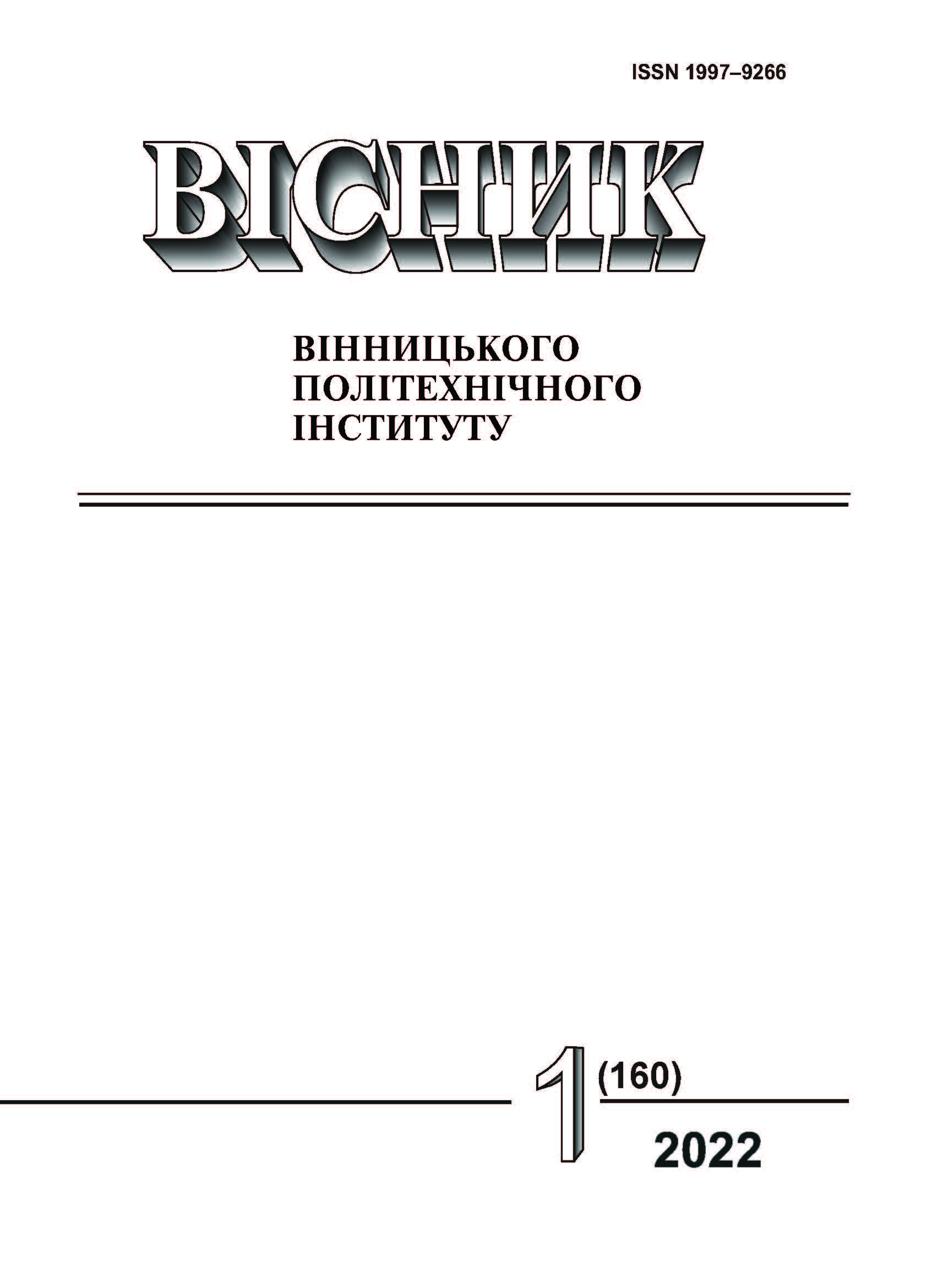Mathematical Modeling of the Soil Environment Stress State
DOI:
https://doi.org/10.31649/1997-9266-2022-160-1-103-111Keywords:
soil, disperse medium, mathematical model, stress, structure, differential equationsAbstract
A mathematical model has been developed that describes the stress state of the soil environment. The basic calculation model of the soil massif is presented in the form of a dispersed medium. Its stress state is described by a discrete-continuum model under the action of all stress components. This approach made it possible to use the main provisions of the theory of elasticity to construct a system of differential equations for the equilibrium of a disperse medium in a plane formulation of the problem. It also makes it possible to use the probabilistic properties of dispersed media to solve systems of differential equations that describe the distribution of stresses in a spacer dispersive medium with a distributive property. When an external load in the form of a concentrated force is applied to the soil mass, a differential equation for the distribution of the vertical normal stress of a parabolic type was obtained. It is one of the varieties of the heat equation. To solve the differential equations for the distribution of vertical stresses, the approach of applying an exponential function is used. It allows to ensure the symmetry of the distribution of stresses with respect to the line of action of the concentrated vertical force. It also allows characterizing the structure of the soil environment itself. To determine the adequacy of the developed mathematical model of the stress state of the soil mass, an external load in the form of a force was used. This force is given as a normal distribution function over the surface of the soil mass. Based on the developed mathematical model, the distribution function of tangential, normal vertical and horizontal stresses was obtained for a normal external force load on the soil mass. A comparative analysis of the results of theoretical and experimental studies on a prototype fine sand type showed a high degree of adequacy of the developed mathematical model of the stress state of the soil environment.
References
Р. Д. Іскович-Лотоцький, і Я. В. Іванчук, «Підвищення ефективності розвантаження матеріалів під дією періодичних ударних імпульсів,» Вібрації в техніці і технологіях, № 2 (51), с. 8-11, 2008.
М. Н. Гольдштейн, А. А. Царьков, и И. И. Черкасов, Механика грунтов, основания и фундаменты. М.: Транспорт, 1981, 342 с.
Р. Д. Іскович-Лотоцький, і Я. В. Іванчук, «Дослідження динаміки процесу роботи універсального гідравлічного віброудраного приводу для розвантаження транспортних засобів,» Наукові нотатки. Міжвузівський збірник (за напрямом «Інженерна механіка»), Луцьк, № 20, с. 184-187, 2007.
Rostislav D. Iskovych-Lototsky, et al. “Automatic system for modeling vibro-impact unloading bulk cargo on vehicles,” Proc. SPIE 10808, Photonics Applications in Astronomy, Communications, Industry, and High-Energy Physics Experiments 2018, 1080860 (1 October 2018). https://doi.org/10.1117/12.2501526 .
Rostislav D. Iskovych-Lototsky, Yaroslav V. Ivanchuk, Yaroslav P. Veselovsky, Konrad Gromaszek, and Ayaulym Oralbekova, “Automatic system for modeling of working processes in pressure generators of hydraulic vibrating and vibro-impact machine,” Proc. SPIE 10808, Photonics Applications in Astronomy, Communications, Industry, and High-Energy Physics Experiments 2018, 1080850 (1 October 2018). https://doi.org/ 10.1117/12.2501532 .
Р. Д. Іскович-Лотоцький, Я. В. Іванчук, і Я. П. Веселовський, «Основи резонансно-структурної теорії віброударного розвантаження транспортних засобів,» Наука та прогрес транспорту. Вісник Дніпропетровського національного університету залізничного транспорту ім. академіка В. Лазаряна, № 5 (53), с. 109-118, 2014. https://doi.org/10.15802/stp2014/30458 .
J. Feda, “Mechanics of particulate materials. The principles.,” Development in geotechnical engineering, vol. 30. Czechoslovak Academy of sciences, Institute of theoretical and applied mechanics, Prague. Elsevier, Amsterdam, Oxford, New York, 1982.
И. И. Кандауров, Механика зернистых сред и ее применение в строительстве, 2-е изд., испр. и перераб. Л.: Стройиздат, Ленингр. Отд-ние, 1988, 280 с.
S. Matysiak, and P. Pusz, “Axisummetric bousinesg problem for a granular hal,” Bulletin of Polish Academie of Scienes, Technical Sciences, no. 33 (7/8), pp. 351-358, 1985.
J. Israelachvili, Intermolecular and Surface Forces, London: Academic Press, 1985-2004.
N. A. Peresti︠u︡k, Differential equations with impulse effects: Multivalued right-hand sides with discontinuities. Berlin, Deutschland: De Gruyter, 2011.
D. I. Zolotarevskaya, “Mathematical simulation and calculation of the soil compaction under dynamic loads,” Eurasian Soil Science, № 44 (4), pp. 407-416, 2011. https://doi.org/10.1134/s1064229311040144 .
M. Krausz, Methode zur Abschätzung der Ergebnisqualität von modularen Gesamtfahrzeugsimulationsmodellen. Wiesbaden: Springer Fachmedien Wiesbaden, 2017.
A. Li, F. Dai, N. Xu, G. Gu, and Z. Hu, “Analysis of a Complex Flexural Toppling Failure of Large Underground Caverns in Layered Rock Masses,” Rock Mechanics and Rock Engineering, 2019. https://doi.org/10.1007/s00603-019-01760-5.
C. Debeleac, and S. Nastac, “Stochastic Approaches of Nonlinear Model-Based Simulations for Vibratory Compaction Process,” PAMM, vol. 14 (1), pp. 749-750, 2014. https://doi.org/10.1002/pamm.201410357.
Downloads
-
pdf (Українська)
Downloads: 136
Published
How to Cite
Issue
Section
License

This work is licensed under a Creative Commons Attribution 4.0 International License.
Authors who publish with this journal agree to the following terms:
- Authors retain copyright and grant the journal right of first publication.
- Authors are able to enter into separate, additional contractual arrangements for the non-exclusive distribution of the journal's published version of the work (e.g., post it to an institutional repository or publish it in a book), with an acknowledgment of its initial publication in this journal.
- Authors are permitted and encouraged to post their work online (e.g., in institutional repositories or on their website) prior to and during the submission process, as it can lead to productive exchanges, as well as earlier and greater citation of published work (See The Effect of Open Access).





